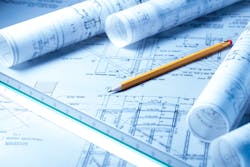In the world of electrical construction projects, it not only takes knowledge and skill but also experience to produce the winning bid. All contractors should want to be competitive in their pricing, but producing an estimate with profit at the end of the project is obviously the goal. When it comes to estimating, hope is not a strategy. Depending on the project, some estimates may be simple, while others may be complex. In the end, even the smallest mistake can mean the difference between the successful low bid and missing a profitable project. Let’s take a look at some best practices to improve your bidding outcomes.
1. Bid the Right Projects: You don’t have to bid every job. Focus on the best projects that fit your company’s ability and expertise. Most estimating departments do not need practice. Remember, it is never too late to abandon an estimate, especially once you realize the project is not the right one for the company. Even after you have started the project and invested precious estimating time, if it is not the right project, the best thing to do is move on to the next project. Selecting the right work to bid is vital to maintaining a profitable business.
2. Visit the Site, and Attend Pre-Bid Meeting: A site visit is vital if you are bidding a renovation project. Understanding existing site conditions and accessibility will provide you with the knowledge to properly address all risks in the estimate. The estimator should always review the drawings before the meeting. Review the contract drawings to identify the items that you will need to see during the site visit. Failing to attend the site visit could prove detrimental to your profitability. On many projects, the site visit and pre-bid meeting is the only time the contractor may see existing conditions and ask specific questions. Inquire at the pre-bid meeting about who handles RFIs (requests for information).
3. Seek Clarification: Be sure you have all pertinent information to properly bid a project. If not, ask questions. A full review of the drawings and specifications is needed to ensure that you have all the necessary information for a competitive and accurate bid. Remember, there is typically a cut-off date and time for questions to be submitted. Making assumptions is not a principle of solid estimating. Request missing information, and seek clarification for areas of confusion.
4. Perform Accurate Takeoffs: The main function of the estimator is to quantify the work on drawings and in the specifications. Review both the plans and specifications carefully. Determine the appropriate wiring methods for the project. Check all scales on all drawings. Verify any details related to the takeoff. A detailed takeoff is the best practice in estimating. Square foot pricing is risky, and contracting is already risky.
5. Avoid Mathematical Errors: Estimating software prevents many mistakes that were once common in the process. Performing math calculations in your head is unwise. Use a calculator or your estimating software to prevent mathematical mistakes. Estimating software is preferred over using a spreadsheet program like Excel. Always double check calculations. Have another estimator or the chief estimator review your numbers. Bid day can create an environment where mistakes and omissions are easy to make.
6. Evaluate all Pricing, Quotations, Expenses, and Subcontractors: You need competitive quotations from your suppliers and subcontractors. You also need to have the assurance that your prospective subcontractors can perform on the project. Prequalification of subcontractors is wise — this is especially true if you are using them for the first time. You should get bids from at least three different companies for each portion you will need to subcontract. This will ensure that you are getting competitive prices. Carefully review all bill of materials for accuracy. Read the fine print. Check delivery dates, payment terms, etc.
7. Identify and Manage Risks: Every project comes with its own unique set of risks. Identifying and managing risks should not be overlooked when preparing a bid. Identify, analyze, and evaluate each risk. The final bid amount should reflect a price that will allow the contractor to properly manage and mitigate any risks. Usually low-impact risks are easy to mitigate, but a high risk with a high impact can be difficult to manage and mitigate. Evaluate all possible risks (low or high), and prepare your bid to be best prepared when something goes wrong.
8. Labor Costs: Accurately estimating labor costs can be one of the most difficult aspects to preparing a bid. To determine labor costs, the estimator must accurately quantify all materials on the drawings and in the specifications. This complete listing of materials should give the estimator a total number of direct labor hours. The estimator must extend the takeoff with the appropriate labor column using estimating software. Adjustments must be made to items in the takeoff according to the ease or difficulty of the installation. Labor factors must be applied to direct hours during the bid summarization to account for productivity effects. Be sure to use accurate wage rates for each labor classification in your area. Account for your labor force’s productivity. Non-local labor can affect a project’s pace. Be sure the total hours have accounted for overtime, weather concerns, stacking of trades, and other labor factors.
9. Materials and Equipment Costs: Be sure you are pricing all materials with local current market pricing. Materials with large quantities should give you some buying power that will help reduce the unit price of an item. Send all specifications and drawings to suppliers for an accurate quotation. Solicit at least three quotations from your regular suppliers. If you are uncertain of the materials being requested in the specifications, you should always get clarification from the architect, owner, or owner’s representative. Make sure you have included all the necessary equipment needed. This may mean you have to rent or purchase additional equipment. Even if your company owns all the equipment needed for the project, make sure it isn’t already allocated for use at another project. Be sure all owned equipment is in good working order. Don’t forget fuel costs and transportation costs of rental equipment for the job site.
10. Incomplete Bid Forms and Documents: Failing to fully complete the bid form, and submit all required documents is a sure-fire way to get a winning bid rejected. Carefully read the “Invitation to Bid” and the “Instructions to Bidders” — and be sure to comply with all the requirements for a qualified bid. Double check that you have incorporated all issued addendums and have acknowledged the addendums in the bid form. Some owners and architects are now allowing bids to be submitted online. Be sure to check the requirements for a proper submission. If the bid is hand delivered, don’t be late. Allow plenty of time for delivery because things happen like traffic jams, accidents, etc.
Prepare a bid submission checklist. Complete as many items the day before the bid’s due date. The preparation of a bid proposal is not hard — just tedious — and should be done meticulously.
Making mistakes can lead to overpriced, non-competitive bids or worse — a lot of underpriced bids with no profit. Omissions in estimates reduce profit margins. By applying these 10 principles to your company’s estimating process will add confidence on bid day. The best outcome is a quality low bid that produces a profit for your company.
Kiper is an independent electrical estimating trainer and consultant based in Niagara Falls, N.Y. He can be reached at [email protected].
About the Author
Don Kiper
Independent Electrical Estimating Consultant
With more than 35 years of experience as a construction electrician, industrial maintenance electrician, foreman, estimator, estimating manager, and project manager, Don has used what he learned to lead in the implementation of estimating software with three electrical contractors where he has worked. Don has 17 years of experience in the construction field and 18 years of office experience and he has personally estimated over $700 million dollars in electrical projects.


